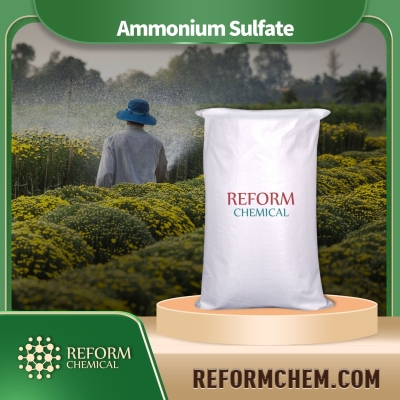-
Categories
-
Pharmaceutical Intermediates
-
Active Pharmaceutical Ingredients
-
Food Additives
- Industrial Coatings
- Agrochemicals
- Dyes and Pigments
- Surfactant
- Flavors and Fragrances
- Chemical Reagents
- Catalyst and Auxiliary
- Natural Products
- Inorganic Chemistry
-
Organic Chemistry
-
Biochemical Engineering
- Analytical Chemistry
-
Cosmetic Ingredient
- Water Treatment Chemical
-
Pharmaceutical Intermediates
Promotion
ECHEMI Mall
Wholesale
Weekly Price
Exhibition
News
-
Trade Service
When it comes to pesticide residues, it is not only China that has a headache, but the whole world is plagued by it
.
Recently, the U.
S.
Environmental Working Group announced the latest "2017 U.
S.
Fruit and Vegetable Pesticide Residue Ranking", and 12 kinds of fruits and vegetables, including strawberries, spinach, and nectarines, are included in the pesticide residue list
.
Testing also found that about 70% of agricultural products in the United States contained pesticide residues
.
The Pesticide Residue Situation is Severe in the World Over the past ten years or so, the US Environmental Working Group has analyzed the data on 48 kinds of pesticide residues in fruits and vegetables released by the USDA every year, and released the "Fruit and Vegetable Pesticide Residue Ranking
.
" This year, strawberries topped the list of pesticide residues, and spinach, nectarines, apples, peaches, pears, cherries, etc.
were also included in the "blacklist of pesticide residues
.
" Pesticide residue testing in the United States has always been very strict.
It is known for its "multiple items and strict standards.
" After analyzing more than 36,000 samples, researchers still found 178 different pesticides and pesticide decomposition products, and some It is even detected after washing and peeling
.
In addition to the United States, the prevention and control of pesticide residues is also a problem in other developed countries
.
In 2016, the Munich Environmental Research Institute in Germany detected pesticide residues "glyphosate" in 14 most popular German beer; in 2014, a large Japanese food company detected 2.
6 million times more pesticides than the standard in frozen food.
"Malathion", this incident caused more than 500 people to be poisoned
.
The international environmental protection organization "Greenpeace" has published the "2015 China's first-tier cities fruit and vegetable pesticide residue ranking list", lettuce has become the domestic pesticide residue, and more than 20 kinds of fruits and vegetables such as small rape and cabbage are famous on the list
.
There are similar lists in various countries, and consumers may be worried when they see it: "Can we still eat fruits and vegetables?" said Yang Zhongqi, chief expert of the Chinese Academy of Forestry.
Green leafy vegetables are the mainstay, which is related to the different dietary structure and testing standards of different countries.
Therefore, the ranking of one place cannot explain the situation of other places, let alone that the pesticide residue of fruits and vegetables in a certain place exceeds the standard, and the fruits and vegetables in the country cannot be eaten
.
From a national perspective, the safety level of fruits and vegetables in my country is generally stable
.
According to statistics from the Ministry of Agriculture, from 2009 to 2014, the supervision qualification rate of fruit and vegetable samples in China was over 95%
.
However, Yang Zhongqi believes that the situation in the prevention and control of pesticide residues in China is still severe
.
He said that China uses 7% of the arable land on the earth to feed one-fifth of the world's population.
To ensure increased food production, the use of chemical fertilizers and pesticides has ranked first in the world
.
Extensive application of chemical fertilizers and pesticides leads to the accumulation of toxic and harmful substances, contaminates fruits and vegetables, and induces food poisoning
.
According to the statistics of the former Ministry of Health, the number of food poisoning caused by excessive pesticide residues in China has risen from 2,974 in 2006 to 5,57 in 2014
.
In the long run, pesticide residues are easy to accumulate in the body, which may lead to cardiovascular and cerebrovascular diseases, diabetes, liver disease, cancer and other diseases
.
.
Recently, the U.
S.
Environmental Working Group announced the latest "2017 U.
S.
Fruit and Vegetable Pesticide Residue Ranking", and 12 kinds of fruits and vegetables, including strawberries, spinach, and nectarines, are included in the pesticide residue list
.
Testing also found that about 70% of agricultural products in the United States contained pesticide residues
.
The Pesticide Residue Situation is Severe in the World Over the past ten years or so, the US Environmental Working Group has analyzed the data on 48 kinds of pesticide residues in fruits and vegetables released by the USDA every year, and released the "Fruit and Vegetable Pesticide Residue Ranking
.
" This year, strawberries topped the list of pesticide residues, and spinach, nectarines, apples, peaches, pears, cherries, etc.
were also included in the "blacklist of pesticide residues
.
" Pesticide residue testing in the United States has always been very strict.
It is known for its "multiple items and strict standards.
" After analyzing more than 36,000 samples, researchers still found 178 different pesticides and pesticide decomposition products, and some It is even detected after washing and peeling
.
In addition to the United States, the prevention and control of pesticide residues is also a problem in other developed countries
.
In 2016, the Munich Environmental Research Institute in Germany detected pesticide residues "glyphosate" in 14 most popular German beer; in 2014, a large Japanese food company detected 2.
6 million times more pesticides than the standard in frozen food.
"Malathion", this incident caused more than 500 people to be poisoned
.
The international environmental protection organization "Greenpeace" has published the "2015 China's first-tier cities fruit and vegetable pesticide residue ranking list", lettuce has become the domestic pesticide residue, and more than 20 kinds of fruits and vegetables such as small rape and cabbage are famous on the list
.
There are similar lists in various countries, and consumers may be worried when they see it: "Can we still eat fruits and vegetables?" said Yang Zhongqi, chief expert of the Chinese Academy of Forestry.
Green leafy vegetables are the mainstay, which is related to the different dietary structure and testing standards of different countries.
Therefore, the ranking of one place cannot explain the situation of other places, let alone that the pesticide residue of fruits and vegetables in a certain place exceeds the standard, and the fruits and vegetables in the country cannot be eaten
.
From a national perspective, the safety level of fruits and vegetables in my country is generally stable
.
According to statistics from the Ministry of Agriculture, from 2009 to 2014, the supervision qualification rate of fruit and vegetable samples in China was over 95%
.
However, Yang Zhongqi believes that the situation in the prevention and control of pesticide residues in China is still severe
.
He said that China uses 7% of the arable land on the earth to feed one-fifth of the world's population.
To ensure increased food production, the use of chemical fertilizers and pesticides has ranked first in the world
.
Extensive application of chemical fertilizers and pesticides leads to the accumulation of toxic and harmful substances, contaminates fruits and vegetables, and induces food poisoning
.
According to the statistics of the former Ministry of Health, the number of food poisoning caused by excessive pesticide residues in China has risen from 2,974 in 2006 to 5,57 in 2014
.
In the long run, pesticide residues are easy to accumulate in the body, which may lead to cardiovascular and cerebrovascular diseases, diabetes, liver disease, cancer and other diseases
.






